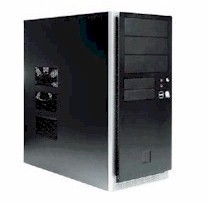|
|
DSC Tech Library
Predictive Dialers
 This section of our technical library presents information and documentation relating to Predictive Dialers and Auto Dialer software and products.
The PACER and Wizard phone systems are PC based call center phone systems that are recognized as premier inbound and outbound computer telephony systems. Features such as automatic call distribution (ACD), Interactive Voice Response (IVR) and call recording have added a new dimension to the predictive dialer and auto dialer capabilities of these systems. These computer based dialing systems can perform various types of auto dialing campaigns simultaneously. These types include Predictive Dialing, Progressive Dialing, Preview Dialing and Dial on Demand.
This section of our technical library presents information and documentation relating to Predictive Dialers and Auto Dialer software and products.
The PACER and Wizard phone systems are PC based call center phone systems that are recognized as premier inbound and outbound computer telephony systems. Features such as automatic call distribution (ACD), Interactive Voice Response (IVR) and call recording have added a new dimension to the predictive dialer and auto dialer capabilities of these systems. These computer based dialing systems can perform various types of auto dialing campaigns simultaneously. These types include Predictive Dialing, Progressive Dialing, Preview Dialing and Dial on Demand.
The trend toward "smart" pacing algorithms for call centers
Page 1
The following is an extract from the article entitled "The trend toward "smart" pacing algorithms for call centers" by Neil Pundit, Telemarketing & Call Center Solutions.
"The vast majority of call pacing algorithms in use today were developed by software engineers who used an "empirical" approach, where elements of the software were programmed and "tweaked" to optimize agent productivity for various types of outbound campaigns. Most of these systems have a mathematical coefficient or "fudge factor" that delivered productivity magic. In effect, the manufacturer tells the call center "Just set it on X and it will work like a charm." In most cases, it did!
Since agent costs account for about 50 percent of a call center's total, the first pacing algorithms focused on minimizing the duration of a campaign and, more importantly, the time between calls for agents. This often resulted in a high rate of abandoned calls, which are costly and inefficient. To increase productivity further and ward off unwanted government regulation, the industry successfully improved the ratio of abandoned to connected calls while keeping agent productivity relatively high. Abandon rates as low as 0.5 percent can be satisfied while attaining agent non-idle rates of 80 percent using empirical systems.
These improvements to empirical call pacing software were achieved by introducing new and improved statistical models, but the operating principles remained the same. Each system was "tuned" to a particular type of outbound campaign based on real-world experience. By this time (early 1990s), the industry recognized a three-part objective for any call pacing program:
1) Make the fewest number of dials necessary to obtain a connect. 2) Minimize the idle time of agents between calls. 3) Do not exceed the prescribed abandon rate.
This definition for optimizing call pacing algorithm performance holds true no matter what system is used. But what happens if, for instance, 20 agents are switched from an outbound campaign to handling inbound calls? Most empirical pacing algorithms - fine-tuned to the parameters of a campaign -- simply cannot keep up with this kind of an environmental change. Major oscillations occur, causing a type of yoyo effect where the system alternately launches too many or too few calls. This translates into either unacceptable abandon rates or idle agents.
Moreover, abandon rates are set as an average for each campaign. If the abandon rate is set at 5 percent, a major oscillation might cause the system to run briefly at 15 percent or higher. Then the empirical system will briefly over-compensate by running near zero percent, leaving many agents idle. As these inefficiencies add up over the course of a campaign, each agent could lose a minute or more of productive time. The longer the campaign, the larger the loss of productivity. Deveolpment Of "Smart" Pacing Algorithms The development of increasingly powerful computers allows the incorporation into pacing algorithms more rigorous mathematical models based on advanced probability and statistical theory. Once a theoretical model is constructed, empirical data can be used to optimize time-constraints, coefficients and other factors.
What this means in practical terms is a call pacing software program capable of:
*Automatically adjusting to changing circumstances in the call center enviroment, second-by-second.
*Minimizing the effects of oscillations caused by changes in the call center enviroment. * Automatically ranking and prioritizing calls based on the probability of success.
* Operating with any dialer that allows computer-based control (open architecture). Meeting The Changing Needs
Although there are many possible approaches for developing smart call pacing software programs with these characteristics, recent experience confirms both the capability and desirability of algorithms based on the application of rigorous mathematics from statistics and probability theory that can deliver the flexibility and stability call centers need as they incorporate more and more functions and ask their agents to perform more varied tasks.
Next Page
Predictive Dialer from $9,995
DSC offers an affordable entry level predictive dialer phone system that utilizes analog phone lines. This 4 line predictive dialing system includes our WIZARD dialer and softphone or comes optionally with our comprehensive software development toolkit.
Predictive dialing campaigns can be developed using our WIZARD software setup utility or we can provide you with a custom predictive dialer campaign. These applications can be easily ported to our digital T1 phone system (PACER) when your call volume requires a larger system.
Calling campaigns can be quickly developed that call numbers from a phone list and when contact is made with an individual, the call can be routed to your online agent or to a work from home employee. If an answering machine is detected, a different message could be left on the machine.
This entry level predictive dialer can be easily expanded by adding additional agent lines and software to support a small call center operation including complete CRM applications.
DSC provides voice broadcast software including our VB wizard development tool for creating voice broadcasting applications. This wizard guides you through each step when defining your VB applications. Comprehensive phone applications can be developed quickly. Simply record your phone prompts and fill in the blanks.
|
|
|


 This section of our technical library presents information and documentation relating to Predictive Dialers and Auto Dialer software and products.
The PACER and Wizard phone systems are PC based call center phone systems that are recognized as premier inbound and outbound computer telephony systems. Features such as automatic call distribution (ACD), Interactive Voice Response (IVR) and call recording have added a new dimension to the predictive dialer and auto dialer capabilities of these systems. These computer based dialing systems can perform various types of auto dialing campaigns simultaneously. These types include Predictive Dialing, Progressive Dialing, Preview Dialing and Dial on Demand.
This section of our technical library presents information and documentation relating to Predictive Dialers and Auto Dialer software and products.
The PACER and Wizard phone systems are PC based call center phone systems that are recognized as premier inbound and outbound computer telephony systems. Features such as automatic call distribution (ACD), Interactive Voice Response (IVR) and call recording have added a new dimension to the predictive dialer and auto dialer capabilities of these systems. These computer based dialing systems can perform various types of auto dialing campaigns simultaneously. These types include Predictive Dialing, Progressive Dialing, Preview Dialing and Dial on Demand.
